The first and perhaps most noticeable element of a man’s suit is
whether the jacket is single or double-breasted. Single-breasted suit
jackets have a single row of buttons down the front, with the jacket
flaps overlapping enough to permit buttoning.
A
double-breasted suit
jacket has two rows of buttons, with the front overlapping sufficiently
to allow both flaps to be attached to the opposite row of buttons. The
choice between a single or double-breasted jacket is a matter of
personal taste, though the vast majority of American men choose the
single breasted option as that this is what is readily available to
them. In addition, a lack of familiarity with the double-breasted suit
jacket may account for the single-breasted suit’s dominance. This is
unfortunate since the double breasted jacket has a number of advantages
for certain men.
Thin gentlemen, in particular those who are somewhat taller, can
benefit greatly from double-breasted suits as they give a fuller
appearance to the figure; on larger men, double-breasted suits can have a
tendency to draw attention to the midsection, so
careful attention and an expert tailor should be employed.

When
it comes to formality, all things being equal a double-breasted jacket
is more formal as that it is always buttoned, although a man wearing a
single breasted jacket can negate this advantage by throwing on a vest.
But for the modern man, the single breasted suit is the current standard
bearer; a dark, well fitting, conservatively built single-breasted
jacket is perfectly acceptable at all but the most formal of occasions.
Jacket Buttons

A
suit jacket has either one or two rows of main front buttons. A
single-breasted jacket has anywhere from one to four, though two and
three button jackets are most common.
The three-button jacket is the most traditional configuration, taking
its cue from English riding jackets; properly worn, it gives the
illusion of height. It’s common practice to button the middle or second
buttons when standing, though the top two buttons may be fastened to
produce a slightly more formal appearance (A great way to remember this
is Sometimes – Always – Never).
Two-button suits are a slightly later innovation, and because they
show more of the shirt and tie, can have a slimming effect. Only the top
button of a two-button jacket is fastened. With the exception of the
one button jacket, the bottom button is never fastened.

Double-breasted jackets most commonly have either four or six buttons
(also referred to as 4 over 2 or 6 over 2) on each side – where there
are six buttons, only the lower four are for buttoning, though due to
the design of the suit, only two will actually be buttoned at any given
time. There is also an extra hidden button called a “jigger” on the
reverse of the outside flap of a double-breasted suit, onto which the
inside or “hidden” flap attaches.
Contrary to the habits of certain celebrities, a double-breasted
jacket should never be left unbuttoned when standing; it is always
securely buttoned upon standing and remains buttoned until one is again
seated. Additionally, while the bottom button of a single-breasted
jacket is always left undone, it is acceptable for both of the operable
buttons on a double-breasted jacket are fastened. However, this practice
is looked down upon more stylish men. As with the gorge of the lapel,
the height of the waist buttons can been altered slightly to accentuate
or diminish height, but this must be done carefully.
Jacket Lapels
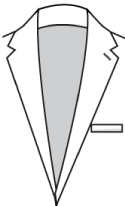
Lapels
come in a wide variety of styles, and have been the subject of fashion
experiments for decades. It’s hard to look back at the 70′s and not
cringe at the sight of lapels extending to the shoulders, and I’m sure
years from now we’ll be embarrassed with our current obsession with slim
cuts, especially on men who this does not flatter.
As is the case with much of classic fashion, the most timeless lapels
are of a moderate width and are matched to the proportions of the
wearer rather than the winds of fashion. By doing this you can ensure
your jacket doesn’t look too big or too small, despite it fitting you
perfectly in other areas. The late Carey Grant used to have the notches
on his lapels lowered so that he wouldn’t appear tall and lanky. A
small, but effective, tailoring technique.
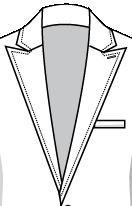
The
vast majority of suit lapels fall into two styles: notched (seen to our
left), which has a wide V-shaped opening where the lapel and collar
join; and peaked (seen to our right), which flares out in a sharp point
with a very narrow deep V at the join creating the illusion of slimness
and height. Notched and peaked lapels are equally classic, though the
latter are most commonly found on double-breasted jackets and somewhat
signal a higher level of formality. A peak lapel on a single-breasted
jacket is an excellent way to raise its level of formality, but is
almost impossible to find on anything but a custom made suit.
Main Jacket Pockets

The
most formal are jetted pockets, where the pocket is sewn into the
lining of the jacket and only a narrow horizontal opening appears on the
side of the jacket. These pockets, being nearly invisible, contribute
to a very sleek, polished appearance, and are most frequently found on
formal-wear.
The next style, the flap pocket, is slightly less formal, though it
is perfectly acceptable in all the circumstances where a gentleman is
likely to be found in a suit. Flap pockets are made identically to
jetted pockets, but include a flap sewn into the top of the pocket,
which covers the pocket’s opening. These are the most common pockets on
suit jackets, and in the very best, are fabricated so that the wearer
may tuck the flaps inside, mimicking the jetted pocket.
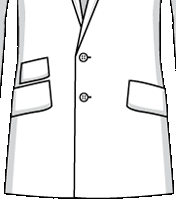
There are also diagonally-cut flap pockets known as “hacking”
pockets. Though they are somewhat less common; the hacking pocket is
derived from English riding gear, and is most prominent on bespoke suits
from English tailors, particularly those traditionally associated with
riding clothes.
The least formal are patch pockets, which are exactly what the name
implies: pockets created by applying a patch to the outside of the
jacket. Patch pockets are the most casual option; they are frequently
found on summer suits that would otherwise appear overly formal, as well
as on sports jackets.
Ticket pocket
Some men’s suit and sport jackets, particularly those with a bespoke
or made-to-measure heritage, include a small ticket pocket above the
right side pockets (as see here in conjunction with the hacking pockets
on the right). As the name implies the ticket pocket was derived from
the English and was originally used to hold tickets at sporting or
theatre events. This pocket serves as an indication of the suit’s
quality, although for tall men it can help them look less lanky.
Breast Pocket
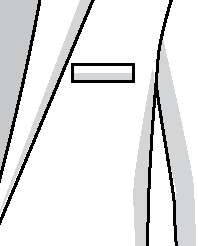
Moving
up the jacket is the breast pocket, which is always open (Closed
pockets can be opened by a tailor on request), and into which only one
item is ever placed: the handkerchief or pocket square. The reason for
this is twofold: First, like the side pockets, any items placed in the
breast pocket create lumpy projections which distort the sleek
appearance of the suit, and second, the breast pocket and the inside
left pocket share the same space in the jacket’s lining, meaning that
objects in the breast pocket tend to force items in the inside pocket
into the wearer’s ribs, which is quite uncomfortable.
Jacket Vents
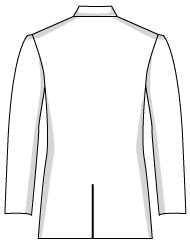
Moving
on from pockets we find the jacket’s vents, flap-like slits in the back
bottom of the jacket which accommodate movement and offer easy access
to the trouser pockets. There are three common styles: Ventless, Center,
and Double.
Ventless jackets, just as the name implies, have no vents, and are
popular on Continental suits; they provide a very sleek look to the back
of the jacket, though they can lead to wrinkling when the wearer sits
down. This style works well for athletically built men, but larger men
had best avoid it.
Center-vented jackets, very popular on American suits, have a single
slit at the back, allowing the jacket to expand at the bottom when
sitting. Because of its placement, center-vented jackets have a habit of
exposing the wearer’s posterior, though most seem not to mind. The
popularity of the center vent is not in it’s functionality, but in that
it is the least expensive vent to manufacture.
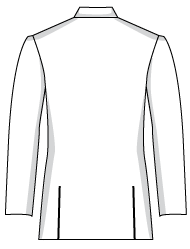
The crown jewel of vents is the double or side-vented jacket marked
by two vents, one on either side, generally just behind the trouser
pockets, to provide easy access and freedom of movement. Side vents
facilitate sitting more easily, moving as needed to prevent the rumpling
of the jacket back. Double vents do an excellent job of covering a
man’s backside, especially when compared to the single ventand adds a
more robust dimension to the wearer’s sillouette.
Jacket Sleeve Buttons

There
are numerous historical reasons for jacket sleeves bearing buttons,
from encouraging the use of handkerchiefs to allowing a gentleman to
wash his hands without removing his jacket (a traditionally grave social
offense in mixed company). Whatever the reason for their arrival on
jacket sleeves, sleeve buttons now form an important part of the detail
work or trimming of the jacket.
Most traditionally, jacket sleeves bear four buttons, though it is
not uncommon to find three. Regardless of number, there should be at
least as many of them as there are buttons on the waist, and they are
always placed within a half-inch or so above the hem.
On bespoke suits, and even some of the higher-quality made-to-measure
jackets, the sleeve buttons are functional and may be referred to as
surgeon’s cuffs. This orginated from the need for doctors to roll up
their sleeves for duty. When the buttons are functional, there is some
temptation to leave one button undone in order to draw attention to the
feature – and by extension, the quality of the suit – though this is a
matter of personal taste.
Trouser Waist Band & Pleats
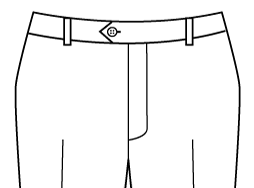
Men’s Dress trousers
should not be the focal point of a man’s attire; rather, their job is
to draw the eye upward to your jacket or downward to your shoes, perhaps
subtly flattering your legs. With that being said, the fit and design
of your trousers is important; nothing is more uncomfortable for a man
than a pair of pants too tight in the crotch or so loose in the backside
as to cause a draft.
Here to our left we see a classic expanded or tab waistband. Most men
are familiar with the extra button inside a pair of dress slacks; few
understand why it is there. The purpose of extra buttons also called a
hook and eye closure in the waist area is to make the trousers
fit more comfortably.
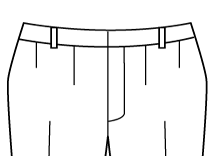
The
idea is to distribute the weight more evenly, thus eliminating pressure
points in your trousers while ensuring a snug fit. In order for this to
work though, your trousers need to fit. Having them expanded or pulled
in by an experienced tailor is well worth the trouble; having your
trousers built custom is the best way to never have this problem to
begin with.
To have your trousers pleated or non-pleated doesn’t seem to be a
difficult decision for most men; whether or not they made the right one
is another story. Flat fronts compliment thin men, while pleats flatter
those who are a bit larger or just prefer extra room in that area. Bear
in mind that pleats often add heft to the wearer’s figure and draws the
eye to the midsection, while flat front pants create cleaner line and
the illusion of slimness. Your decision here does have consequences – it
may determine your trouser cuff decision.
Trouser Cuffs

The
general rules with trouser cuffs are this – Tall men should cuff,
thereby negating their lankiness and those vertically challenged should
not in order to create the illusion of height. Also, if you chose to go
with the pleats, you should cuff while flat fronts should never be
cuffed. And now that I’ve said this, you’re wondering “What if I’m tall
and thin or 5’4″ and 250lbs…..according to these rules and the ones
above, I’m a contradiction.”
Perhaps this is a good way to wrap this up. All of these rules, all
of these laws of fashion and style, well, they are more like guides.
They are paths that have worked, they are techniques that have been
tested; but they are not absolutes.
Conclusion
The journey to sartorial excellence is long, yet rewarding. This
article only scratches the surface of the iceberg; writers whom I admire
have written multiple volumes on men’s style and clothing, and still
only capture a fragment of its essence. The truth of the matter is that
there are as many styles as there are men; within each of us is our own
personal style, in part dictated by our physical characteristics but
more importantly determined by how we see ourselves. For more
information on
men’s suits and men’s style, visit my other Knols or A
Tailored Suit’s Style Guide.
Related Article:
http://ausuit.blogspot.com/2013/05/ivory-three-piece-custom-wedding-
suit.html
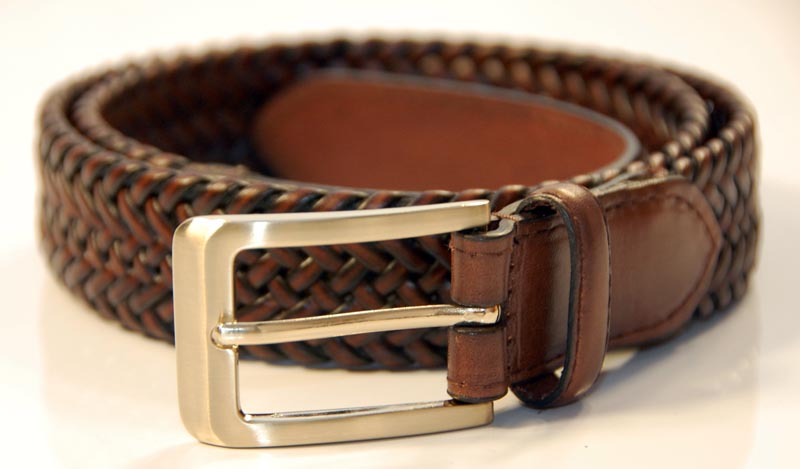
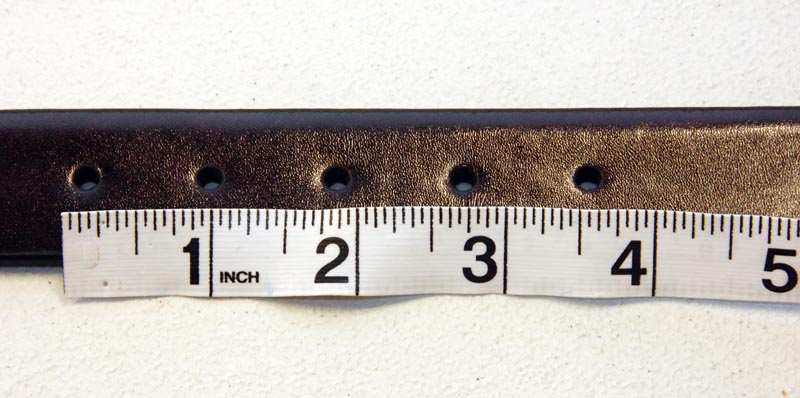
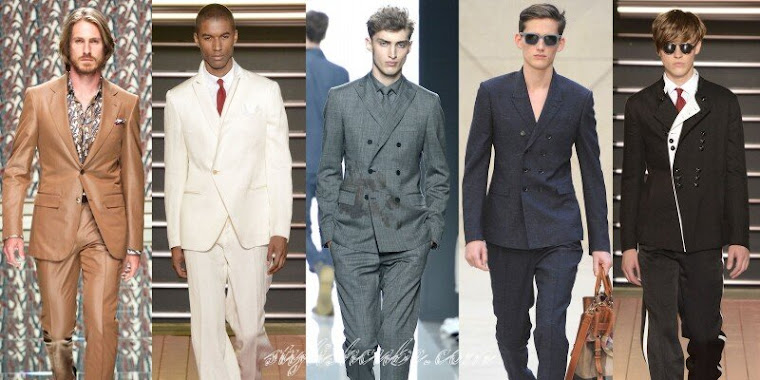
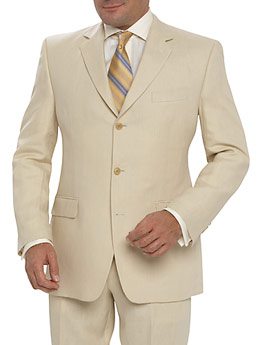

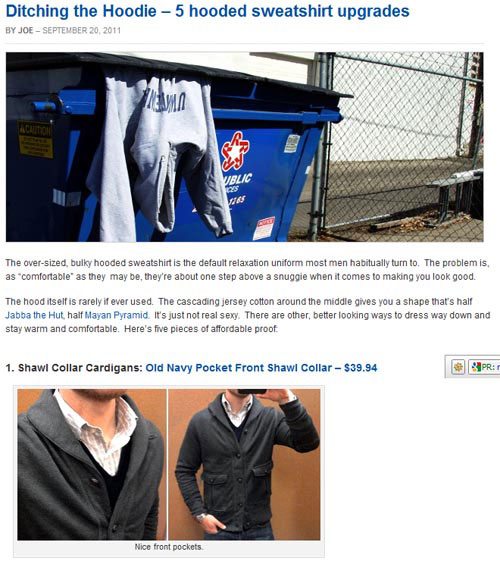
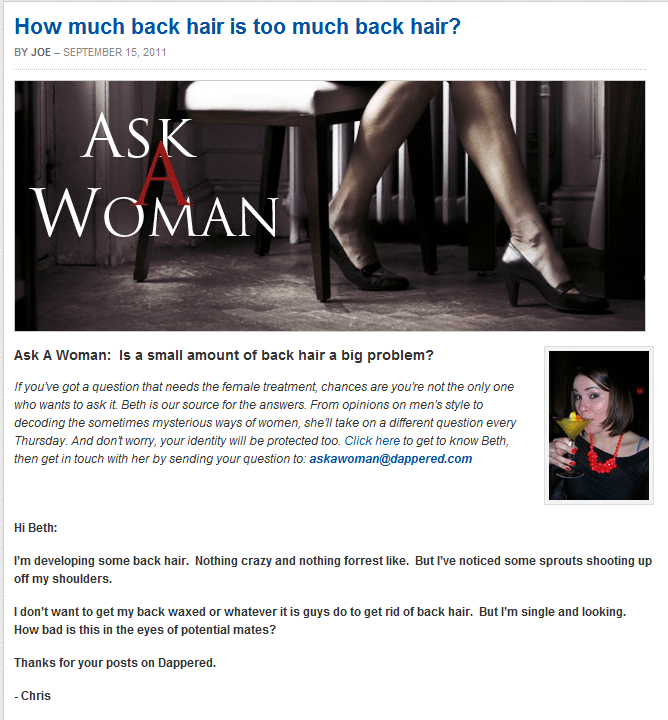
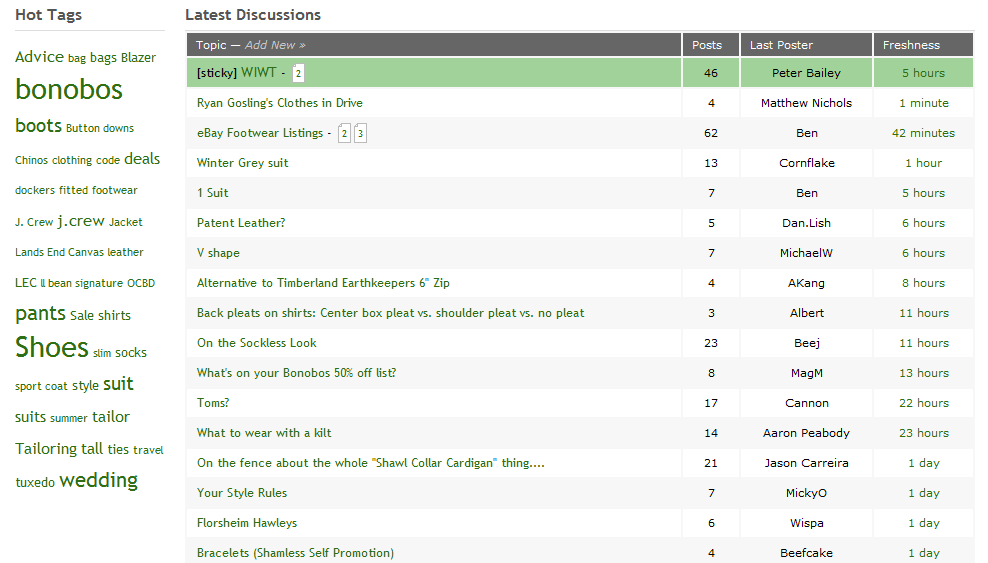
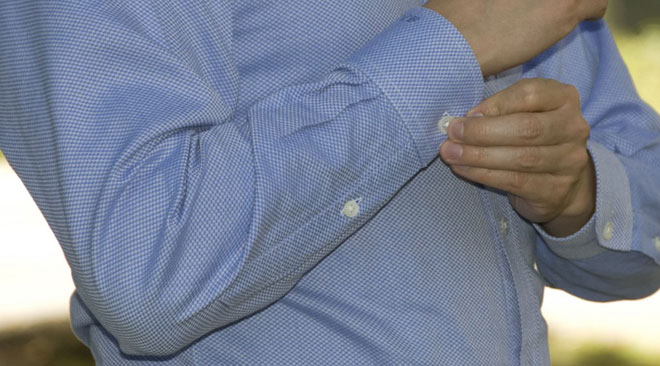
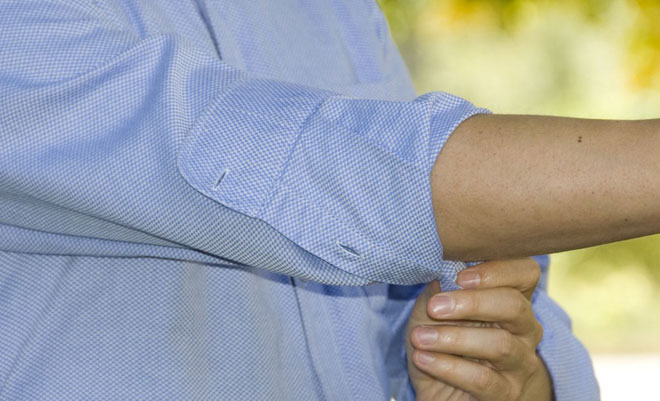
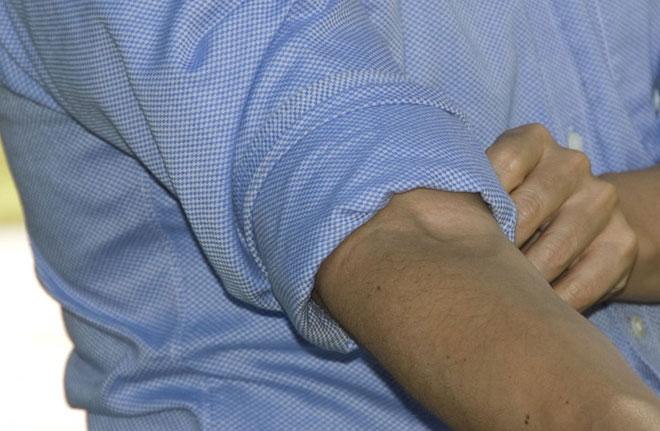
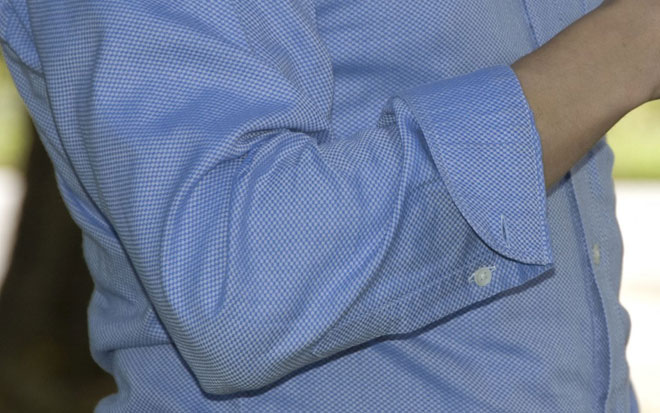
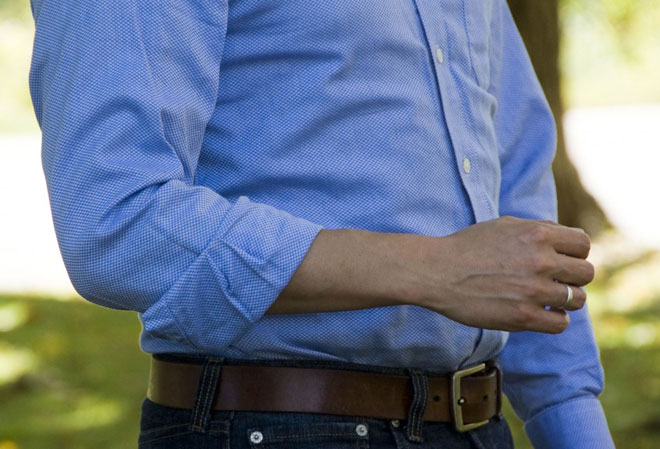
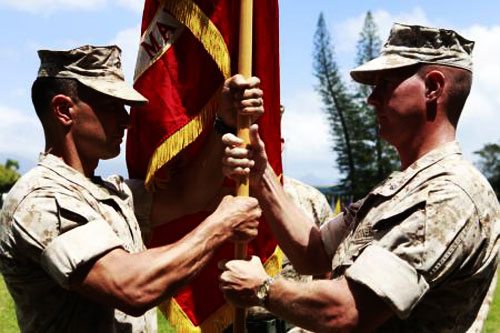 Related Articlea:
Related Articlea: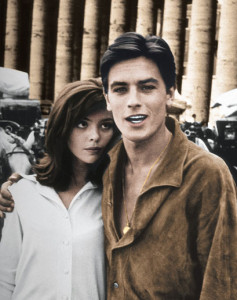 Gentlemen – Let’s talk about first impressions.
Gentlemen – Let’s talk about first impressions.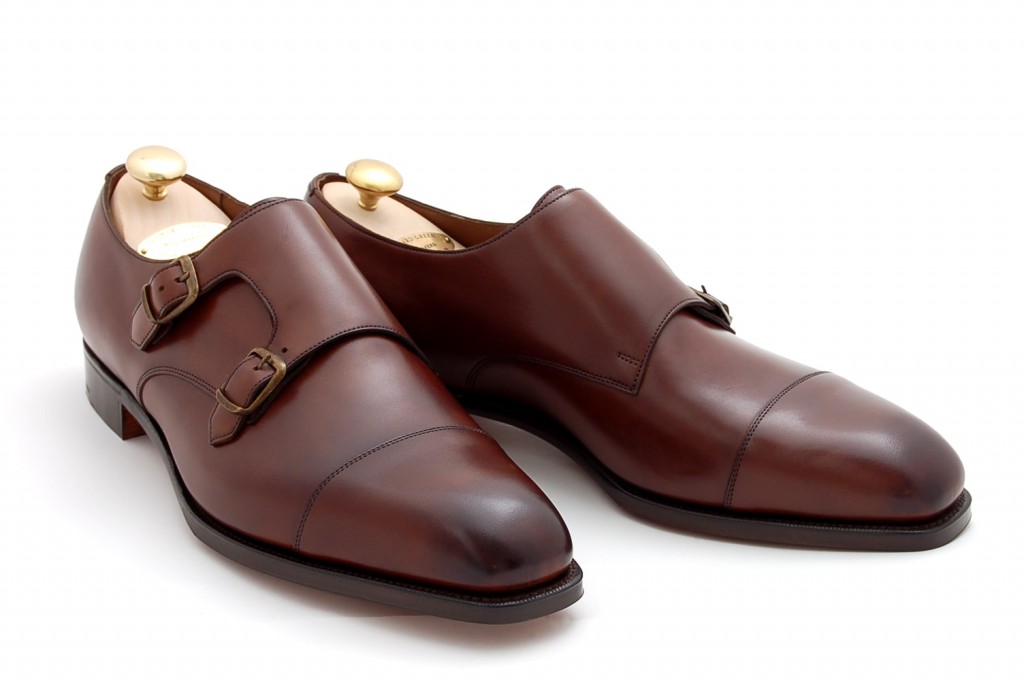
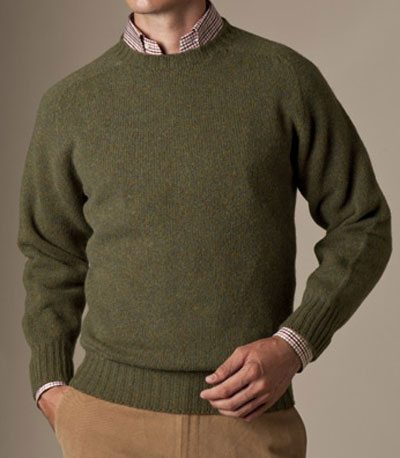
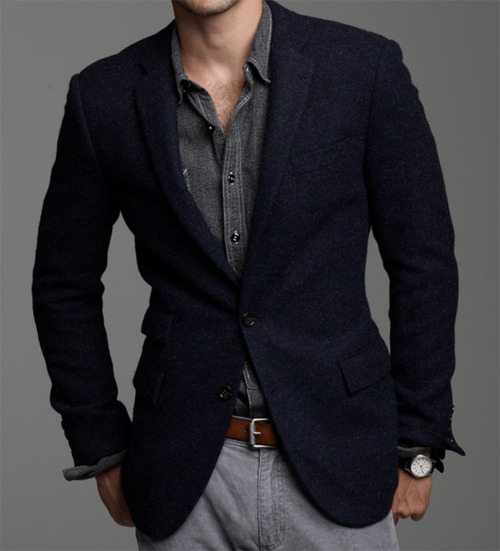
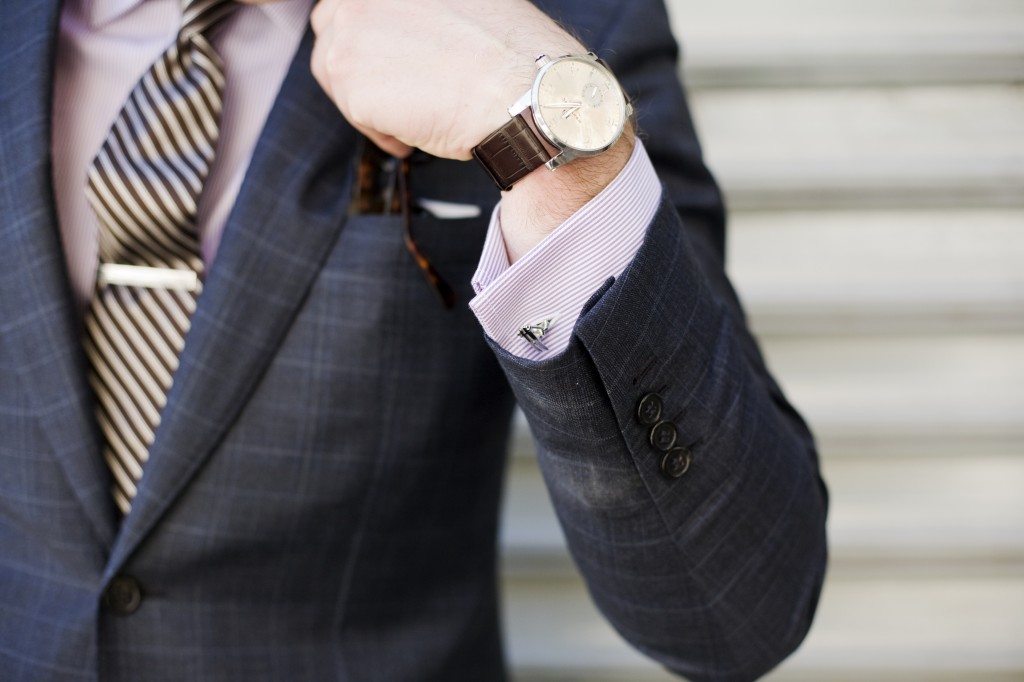
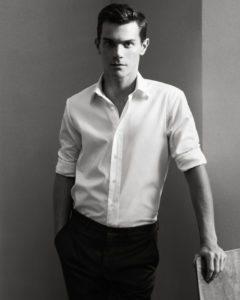
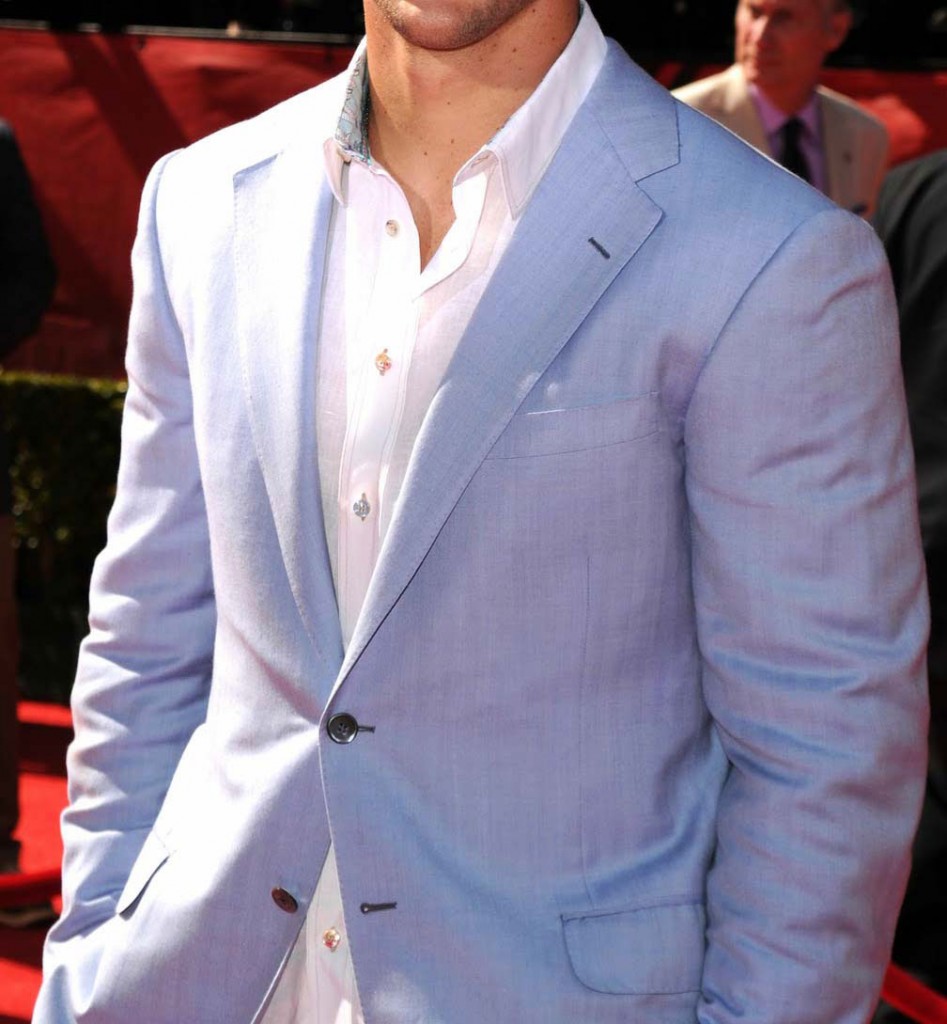
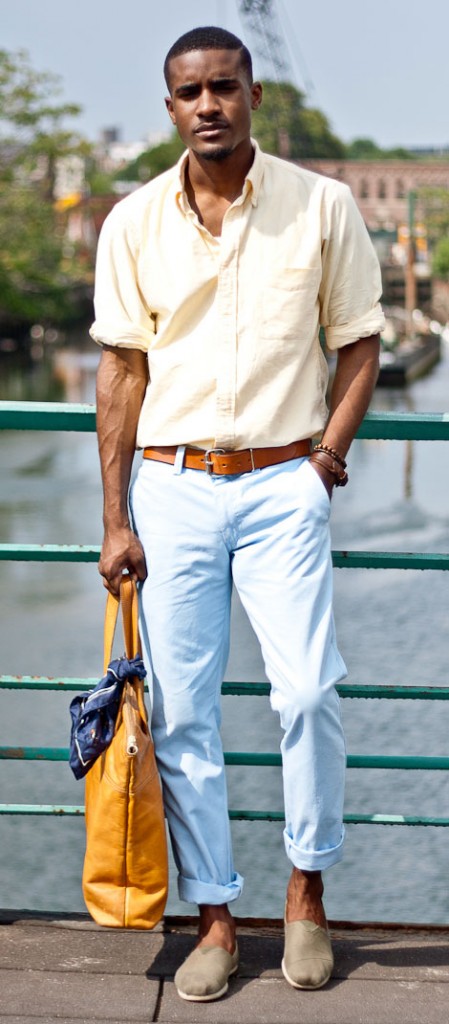























 When
it comes to formality, all things being equal a double-breasted jacket
is more formal as that it is always buttoned, although a man wearing a
single breasted jacket can negate this advantage by throwing on a vest.
But for the modern man, the single breasted suit is the current standard
bearer; a dark, well fitting, conservatively built single-breasted
jacket is perfectly acceptable at all but the most formal of occasions.
When
it comes to formality, all things being equal a double-breasted jacket
is more formal as that it is always buttoned, although a man wearing a
single breasted jacket can negate this advantage by throwing on a vest.
But for the modern man, the single breasted suit is the current standard
bearer; a dark, well fitting, conservatively built single-breasted
jacket is perfectly acceptable at all but the most formal of occasions. A
suit jacket has either one or two rows of main front buttons. A
single-breasted jacket has anywhere from one to four, though two and
three button jackets are most common.
A
suit jacket has either one or two rows of main front buttons. A
single-breasted jacket has anywhere from one to four, though two and
three button jackets are most common. Lapels
come in a wide variety of styles, and have been the subject of fashion
experiments for decades. It’s hard to look back at the 70′s and not
cringe at the sight of lapels extending to the shoulders, and I’m sure
years from now we’ll be embarrassed with our current obsession with slim
cuts, especially on men who this does not flatter.
Lapels
come in a wide variety of styles, and have been the subject of fashion
experiments for decades. It’s hard to look back at the 70′s and not
cringe at the sight of lapels extending to the shoulders, and I’m sure
years from now we’ll be embarrassed with our current obsession with slim
cuts, especially on men who this does not flatter. The
vast majority of suit lapels fall into two styles: notched (seen to our
left), which has a wide V-shaped opening where the lapel and collar
join; and peaked (seen to our right), which flares out in a sharp point
with a very narrow deep V at the join creating the illusion of slimness
and height. Notched and peaked lapels are equally classic, though the
latter are most commonly found on double-breasted jackets and somewhat
signal a higher level of formality. A peak lapel on a single-breasted
jacket is an excellent way to raise its level of formality, but is
almost impossible to find on anything but a custom made suit.
The
vast majority of suit lapels fall into two styles: notched (seen to our
left), which has a wide V-shaped opening where the lapel and collar
join; and peaked (seen to our right), which flares out in a sharp point
with a very narrow deep V at the join creating the illusion of slimness
and height. Notched and peaked lapels are equally classic, though the
latter are most commonly found on double-breasted jackets and somewhat
signal a higher level of formality. A peak lapel on a single-breasted
jacket is an excellent way to raise its level of formality, but is
almost impossible to find on anything but a custom made suit. The
most formal are jetted pockets, where the pocket is sewn into the
lining of the jacket and only a narrow horizontal opening appears on the
side of the jacket. These pockets, being nearly invisible, contribute
to a very sleek, polished appearance, and are most frequently found on
formal-wear.
The
most formal are jetted pockets, where the pocket is sewn into the
lining of the jacket and only a narrow horizontal opening appears on the
side of the jacket. These pockets, being nearly invisible, contribute
to a very sleek, polished appearance, and are most frequently found on
formal-wear.



 There
are numerous historical reasons for jacket sleeves bearing buttons,
from encouraging the use of handkerchiefs to allowing a gentleman to
wash his hands without removing his jacket (a traditionally grave social
offense in mixed company). Whatever the reason for their arrival on
jacket sleeves, sleeve buttons now form an important part of the detail
work or trimming of the jacket.
There
are numerous historical reasons for jacket sleeves bearing buttons,
from encouraging the use of handkerchiefs to allowing a gentleman to
wash his hands without removing his jacket (a traditionally grave social
offense in mixed company). Whatever the reason for their arrival on
jacket sleeves, sleeve buttons now form an important part of the detail
work or trimming of the jacket. Men’s Dress trousers
should not be the focal point of a man’s attire; rather, their job is
to draw the eye upward to your jacket or downward to your shoes, perhaps
subtly flattering your legs. With that being said, the fit and design
of your trousers is important; nothing is more uncomfortable for a man
than a pair of pants too tight in the crotch or so loose in the backside
as to cause a draft.
Men’s Dress trousers
should not be the focal point of a man’s attire; rather, their job is
to draw the eye upward to your jacket or downward to your shoes, perhaps
subtly flattering your legs. With that being said, the fit and design
of your trousers is important; nothing is more uncomfortable for a man
than a pair of pants too tight in the crotch or so loose in the backside
as to cause a draft. The
idea is to distribute the weight more evenly, thus eliminating pressure
points in your trousers while ensuring a snug fit. In order for this to
work though, your trousers need to fit. Having them expanded or pulled
in by an experienced tailor is well worth the trouble; having your
trousers built custom is the best way to never have this problem to
begin with.
The
idea is to distribute the weight more evenly, thus eliminating pressure
points in your trousers while ensuring a snug fit. In order for this to
work though, your trousers need to fit. Having them expanded or pulled
in by an experienced tailor is well worth the trouble; having your
trousers built custom is the best way to never have this problem to
begin with. The
general rules with trouser cuffs are this – Tall men should cuff,
thereby negating their lankiness and those vertically challenged should
not in order to create the illusion of height. Also, if you chose to go
with the pleats, you should cuff while flat fronts should never be
cuffed. And now that I’ve said this, you’re wondering “What if I’m tall
and thin or 5’4″ and 250lbs…..according to these rules and the ones
above, I’m a contradiction.”
The
general rules with trouser cuffs are this – Tall men should cuff,
thereby negating their lankiness and those vertically challenged should
not in order to create the illusion of height. Also, if you chose to go
with the pleats, you should cuff while flat fronts should never be
cuffed. And now that I’ve said this, you’re wondering “What if I’m tall
and thin or 5’4″ and 250lbs…..according to these rules and the ones
above, I’m a contradiction.”